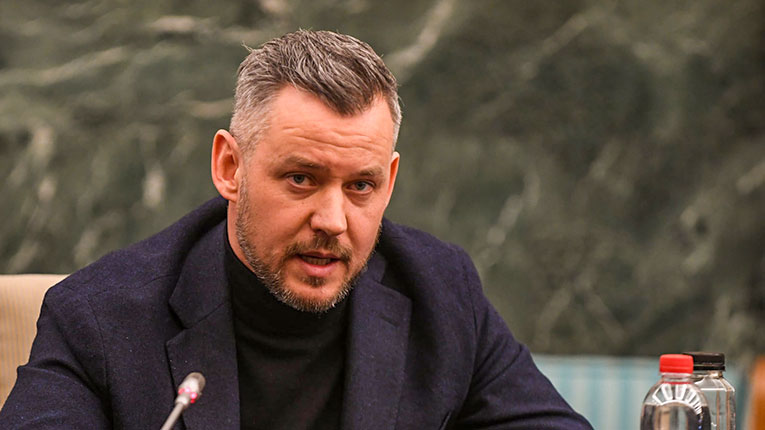Romania’s electricity consumption decreased by 8%, and natural gas consumption decreased by 21% in the last three years, said the president of the Commission for Energy, Energy Infrastructure and Mineral Resources of the Senate, UDMR Senator Lóránt Antal, in the the conference dedicated to the launch of the energymap.ro platform.
This fact is all the more worrying as the decrease in natural gas consumption is even more evident when we look at non-household consumption, i.e. that of economic actors, which recorded a 25% decrease. “Currently, non-household consumption constitutes approximately 72% of total electricity consumption and 64% of natural gas consumption. The trends we see are as realistic as possible and suggest a decline in industrial activity mainly due to the energy crisis, but also due to the lack of policies to support the economy. It is enough to look at the GDP growth in 2023: it was only 2%”, detailed the politician.
“And if we look at the per capita consumption, the value of 2.2 MWh/capita/year for electricity ranks us last in Europe, just below the global average of 3.3 MWh, and the 4.7 MWh/capita for natural gas places us in following countries such as Hungary, Austria, Norway or the Netherlands, where per capita consumption varies from 10 to 17 MWh. So a first conclusion: relative to its economic and energy potential, Romania has an underdeveloped industry”, drew the attention of the president of the Energy Commission.
Comparing the counties and development regions in Romania based on energymap.ro data, we find that the regions with the highest energy consumption were Bucharest-Ilfov and South Muntenia, and the North-East region, i.e. the northern half of Moldova, ranked last . And in terms of energy consumption/capita, we can observe the same trend: the highest value was recorded in the two regions in the South, and the lowest in the North-East, where the share of non-domestic consumption is also the lowest in Romania, to 51%. The highest rate of reduction in natural gas consumption, however, was recorded in the Center region, with a decrease of approx. 37% and in the Southeast, with 26%, while the smallest decrease can be observed in South Muntenia and Bucharest-Ilfov. In terms of electricity, the North-West and the Center were the regions with the biggest reduction in consumption, with 17% and 10%, respectively, and the South-East and Bucharest-Ilfov reported the smallest decreases.
If we look at the level of the counties, we find an even more suggestive picture: counties such as Mureș, Galați, Olt, Tulcea or Vâlcea, where important industrial platforms have reduced or stopped their activity, are at the top of the ranking for the decrease in energy consumption. In Mureș, for example, the restriction of Azomureș activity led to a 55% decrease, the largest in the country in absolute terms, of non-domestic natural gas consumption and a 29% decrease in non-domestic electricity consumption, the largest decrease in the country. The impact of the decrease can also be seen in the GDP growth rate in Mureș County from 2022 – it was only around 0.2%.
The obvious decrease in energy consumption also reflects a negative trend in the industrial performance of our country. In order to change this trend, Antal emphasized that Romania’s economy needs public policies developed efficiently, in support of industry, but also of SMEs, on the one hand, and on the other hand, accessible and safe energy. “For this reason, natural gas remains a strategic resource for Romania: we have the least dependence on external suppliers in Europe, we have a cheap, internal resource that we can use for the benefit of the industry, at much lower costs than other countries.”
Finally, Antal wanted to emphasize that despite the need for reindustrialization, the current Government not only does not take concrete measures, but actually makes the objective difficult. In May, MIPE changed the financing structure of the Sustainable Development Program, reallocating funds from the natural gas network development component to the energy efficiency sector of public buildings and to the water and wastewater sector.
The UDMR senator accused the Government of inconsistency: “The current government, instead of following a rational direction for the development of distribution networks, chooses to act imprudently, making it difficult to develop these networks in areas of the country, where they would contribute to reindustrialization and SME activity of the! During the period when the UDMR was in government, we introduced the concept of reindustrialization into the government program. We all agreed that the development of natural gas infrastructure is a precondition of this reindustrialization.”
“From 2027, Romania will become the largest producer of natural gas in Europe. If we do not develop our distribution networks, instead of using our own resources for the reindustrialization of the country’s regions, we will have to export the gas we extract from the Black Sea to other countries at a low price.”
The energymap.ro platform is an interactive online map created on the own initiative of the parliamentarian from Harghita to provide an overview of the production and consumption of electricity and natural gas in Romania between 2021 and 2023.

